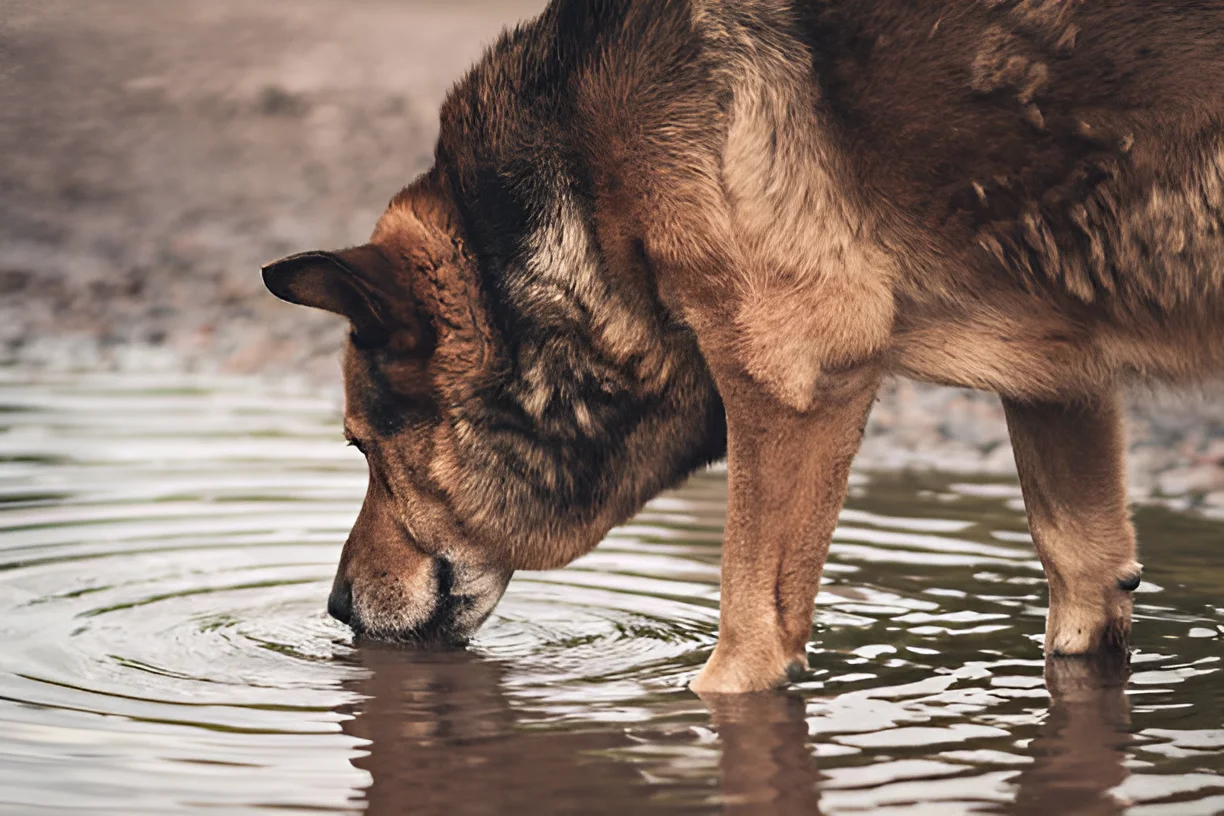If your dog drinks bad water, monitor them closely for symptoms and contact your veterinarian if any signs of illness appear. Understanding the potential risks and knowing how to respond can help ensure your dog’s health and safety.
Dogs are naturally curious and often drink from puddles, ponds, or other sources of stagnant water. While this might seem harmless, bad water can contain harmful bacteria, parasites, and toxins that pose serious health risks to your pet. This comprehensive guide will explore what to do if your dog drinks bad water, the symptoms to watch for, and preventive measures to keep your dog safe. Whether you’re a seasoned pet owner or new to caring for a dog, this article will provide valuable insights and practical advice.
Understanding Bad Water
Bad water refers to any water that is contaminated with harmful substances. This can include stagnant water, water with visible debris, or water that has an unusual color or odor.
Common Sources of Bad Water:
- Puddles and Ponds: Stagnant water in puddles and ponds can harbor bacteria and parasites.
- Old Water Bowls: Water left in bowls for too long can become contaminated.
- Streams and Rivers: Even natural water sources can contain harmful microorganisms.
- Urban Runoff: Water from streets and sidewalks can carry pollutants and chemicals.
Potential Risks of Drinking Bad Water
Drinking contaminated water can expose your dog to various health risks, including:
Bacterial Infections:
- Leptospirosis: A bacterial infection that can cause kidney and liver damage.
- E. coli: Can lead to severe gastrointestinal issues.
Parasitic Infections:
- Giardia: A parasite that causes diarrhea and weight loss.
- Cryptosporidium: Another parasite that affects the intestines.
Toxins:
- Blue-Green Algae: Produces toxins that can be fatal to dogs.
- Chemical Contaminants: Pesticides, fertilizers, and other chemicals can cause poisoning.
Symptoms to Watch For
If your dog drinks bad water, it’s important to monitor them for any signs of illness. Common symptoms include:
- Vomiting: Frequent vomiting can indicate ingestion of harmful substances.
- Diarrhea: Watery or bloody diarrhea is a common symptom of bacterial or parasitic infection.
- Lethargy: Unusual tiredness or lack of energy can be a sign of illness.
- Loss of Appetite: Refusal to eat can indicate gastrointestinal distress.
- Fever: A high temperature can indicate an infection.
- Excessive Thirst: Increased drinking can be a sign of dehydration or kidney issues.
Immediate Steps to Take
If you suspect your dog has ingested bad water, take the following steps:
1. Remove Access to the Water:
- Prevent your dog from drinking any more of the contaminated water.
2. Offer Fresh Water:
- Encourage your dog to drink fresh, clean water to help flush out any toxins.
3. Monitor for Symptoms:
- Keep a close eye on your dog for any signs of illness. Note any changes in behavior or physical condition.
4. Contact Your Veterinarian:
- If your dog shows any symptoms of illness, contact your veterinarian immediately for advice and possible treatment.
Veterinary Care and Treatment
Your veterinarian may recommend several diagnostic tests and treatments depending on your dog’s symptoms:
Diagnostic Tests:
- Blood Tests: To check for infections or organ damage.
- Urinalysis: To detect kidney function and possible infections.
- Fecal Examination: To identify parasites.
- Imaging: X-rays or ultrasounds to check for internal issues.
Treatment Options:
- Intravenous Fluids: To treat dehydration and flush out toxins.
- Antibiotics: For bacterial infections.
- Antiparasitic Medications: For parasitic infections.
- Activated Charcoal: To absorb toxins in cases of poisoning.
Preventive Measures
To prevent your dog from drinking bad water in the future, consider the following tips:
1. Bring Fresh Water:
- Always bring fresh water and a bowl for your dog when going on walks or outdoor adventures.
2. Supervise Your Dog:
- Keep a close eye on your dog and prevent them from drinking from puddles, ponds, or other stagnant water sources.
3. Check Water Quality:
- Avoid letting your dog swim in or drink from water sources with visible algae blooms or signs of contamination.
4. Educate Yourself:
- Learn about the common contaminants in your local area and how to recognize them.
Conclusion
If your dog drinks bad water, monitor them closely for symptoms and contact your veterinarian if any signs of illness appear. Understanding the potential risks and knowing how to respond can help ensure your dog’s health and safety. By following the guidelines and tips provided in this article, you can prevent future incidents and keep your dog safe and healthy.
The photo featured below the post headline is Credit: Andrei310/istockphoto
I hope you find this post helpful and informative. If Yes’ feel free to share it with your friends!
Frequently Asked Questions
What should I do if my dog drinks bad water?
Monitor your dog for symptoms, offer fresh water, and contact your veterinarian if any signs of illness appear.
What are the symptoms of illness from drinking bad water?
Common symptoms include vomiting, diarrhea, lethargy, loss of appetite, fever, and excessive thirst.
Can bad water make my dog seriously ill?
Yes, bad water can contain harmful bacteria, parasites, and toxins that can cause serious illness.
How can I prevent my dog from drinking bad water?
Bring fresh water for your dog, supervise them closely, and avoid letting them drink from contaminated water sources.
What should I do if my dog shows symptoms of illness after drinking bad water?
Contact your veterinarian immediately for advice and possible treatment.

